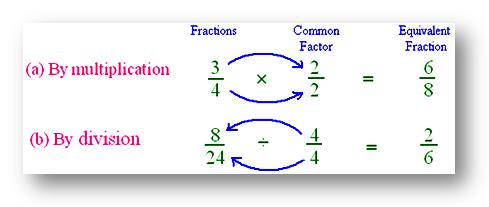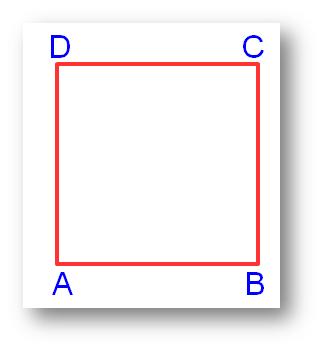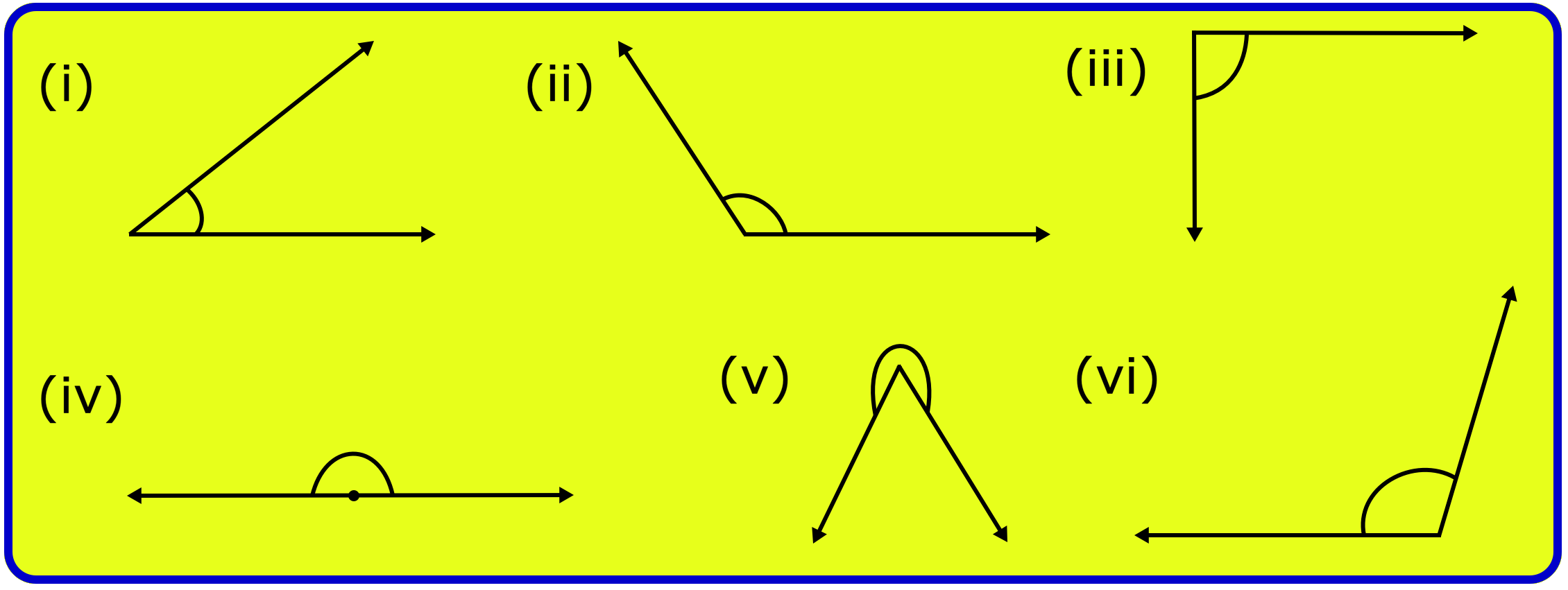Subscribe to our YouTube channel for the latest videos, updates, and tips.
Home | About Us | Contact Us | Privacy | Math Blog
Conversion of a Fraction into its Smallest and Simplest Form
In conversion of a fraction into its smallest and simplest form are discussed here.
If the numerator and denominator of a fraction have no common factors
then the fraction is considered as its smallest and simplest form, as 3/5, 2/3, 4/7, 7/11, etc., are the simplest forms of 6/10, 8/12, 20/35, 21/33 respectively.
Examples on conversion of a fraction into its smallest and simplest form:
1. Change 45/60 to its simplest form.
Solution:
All the factors of numerator and denominator are written;
45 = 3 x 3 x 5 and 60 = 3 x 2 x 2 x 5 (common factors are removed)
= 3/4
Thus, to get the simplest form of a fraction, the common factors of numerator and denominator are removed.
2. Change 15/75 to its simplest form.
Solution:
All the factors of numerator and denominator are written
15 = 3 x 5 and 75 = 3 x 5 x 5 (common factors are removed)
= 1/5
Thus, to get the simplest form of a fraction, the common factors of numerator and denominator are removed.
Reducing Fraction to the Lowest Term:
You have learnt to find equivalent fractions by multiplying and diving.
Now let us try to reduce fractions to the lowest term.
|
|
Equivalent fraction in the lowest term.
2. Sometimes we need to divide more than once.
|
|
So, 16/24 = 2/3
Therefore, 2/3 is the lowest term
|
|
We have divided by the highest common factor
Note:
When the numerator and the denominator of the fraction cannot be
divided by a factor greater than 1, the fraction is in its lowest term.
For example, 3/4, 2/3, 1/2
Related Concept
● Representation of a Fraction
● Properties of Equivalent Fractions
● Comparison of Like Fractions
● Comparison of Fractions having the same Numerator
● Conversion of Fractions into Fractions having Same Denominator
● Conversion of a Fraction into its Smallest and Simplest Form
● Addition of Fractions having the Same Denominator
● Subtraction of Fractions having the Same Denominator
● Addition and Subtraction of Fractions on the Fraction Number Line
From Conversion of a Fraction into its Smallest and Simplest Form to HOME PAGE
Didn't find what you were looking for? Or want to know more information about Math Only Math. Use this Google Search to find what you need.
Recent Articles
-
Quadrilaterals | Four Sided Polygon | Closed Figure | Adjoining Figure
Jul 14, 25 02:55 AM
Quadrilaterals are known as four sided polygon.What is a quadrilateral? A closed figure made of our line segments is called a quadrilateral. For example: -
Formation of Numbers | Smallest and Greatest Number| Number Formation
Jul 14, 25 01:53 AM
In formation of numbers we will learn the numbers having different numbers of digits. We know that: (i) Greatest number of one digit = 9, -
5th Grade Geometry Practice Test | Angle | Triangle | Circle |Free Ans
Jul 14, 25 01:53 AM
In 5th grade geometry practice test you will get different types of practice questions on lines, types of angle, triangles, properties of triangles, classification of triangles, construction of triang… -
5th Grade Circle Worksheet | Free Worksheet with Answer |Practice Math
Jul 11, 25 02:14 PM
In 5th Grade Circle Worksheet you will get different types of questions on parts of a circle, relation between radius and diameter, interior of a circle, exterior of a circle and construction of circl… -
Construction of a Circle | Working Rules | Step-by-step Explanation |
Jul 09, 25 01:29 AM
Construction of a Circle when the length of its Radius is given. Working Rules | Step I: Open the compass such that its pointer be put on initial point (i.e. O) of ruler / scale and the pencil-end be…






New! Comments
Have your say about what you just read! Leave me a comment in the box below. Ask a Question or Answer a Question.